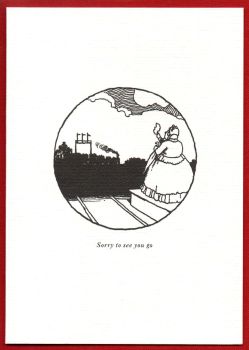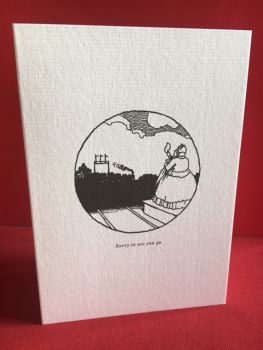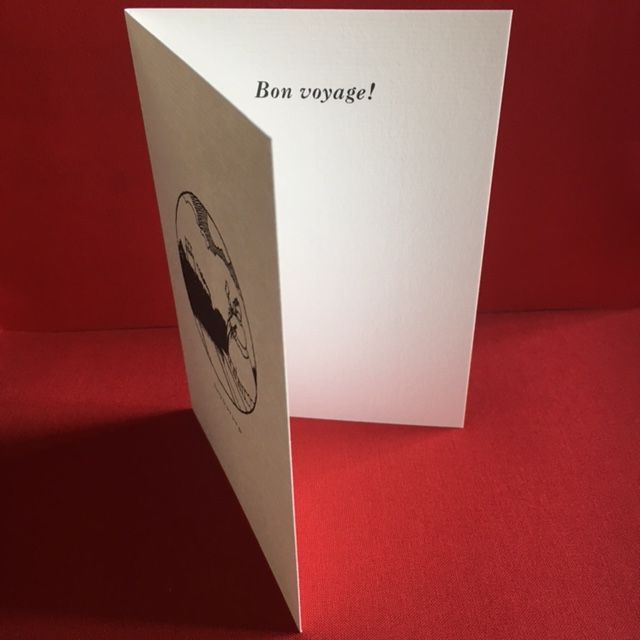-
“The Great Western Railway celebrates its one hundredth birthday this year, but unlike other Centenarians such as trees and turtles, grows more youthful after a century of existence.”
Heath Robinson Good Luck Card
Sorry to see you go
£2.50
In Railway Ribaldry (1935) Heath Robinson captures just about every railway scene you can imagine in everyday life and quite a few you cannot. For a farewell, he comes up with a classic.
17 in stock
Dispatched next day with Royal Mail 2nd Class
- RRP: £2.50 (incl. VAT)
- Format: 105 mm x 148 mm (A6) landscape, folded
- Paper: FSC 300 gsm ivory laid cartridge
- Envelope: White
- Weight: 9 g
- ISBN: 978 1 8733 2958 0
- Publication: August 2017
Heath Robinson lived and breathed the age of steam, in which he was brought up. In 1935 he helped the Great Western Railway celebrate their 100th anniversary by illustrating their story in a commemorative book, Railway Ribaldry. There are few places so full of emotion as a railway station platform when you have to bid farewell, and he captures the moment perfectly, echoing the famous painting by Ford Madox Brown of a couple sailing for the new world.
Front Page Text: Sorry to see you go
Message Inside: Bon voyage!
William Heath Robinson (1872-1944) is one of the few artists whose names have become part of the English language. According to the Oxford English Dictionary, the expression is used to describe ‘any absurdly ingenious and impractical device’. Heath Robinson started out as a landscape artist and book illustrator before finding world-wide fame with his mechanical fantasies. He invented machines for making coffee, lighting cigars, extinguishing candles, peeling potatoes, testing raincoats, saving chickens from injury when crossing the road and conducting just about every other conceivable, and sometimes inconceivable, activity. He satirized the new ways of living that came with technological change, small flats and shortages, creating a whimsical social commentary on his times: history encapsulated in pictures.










